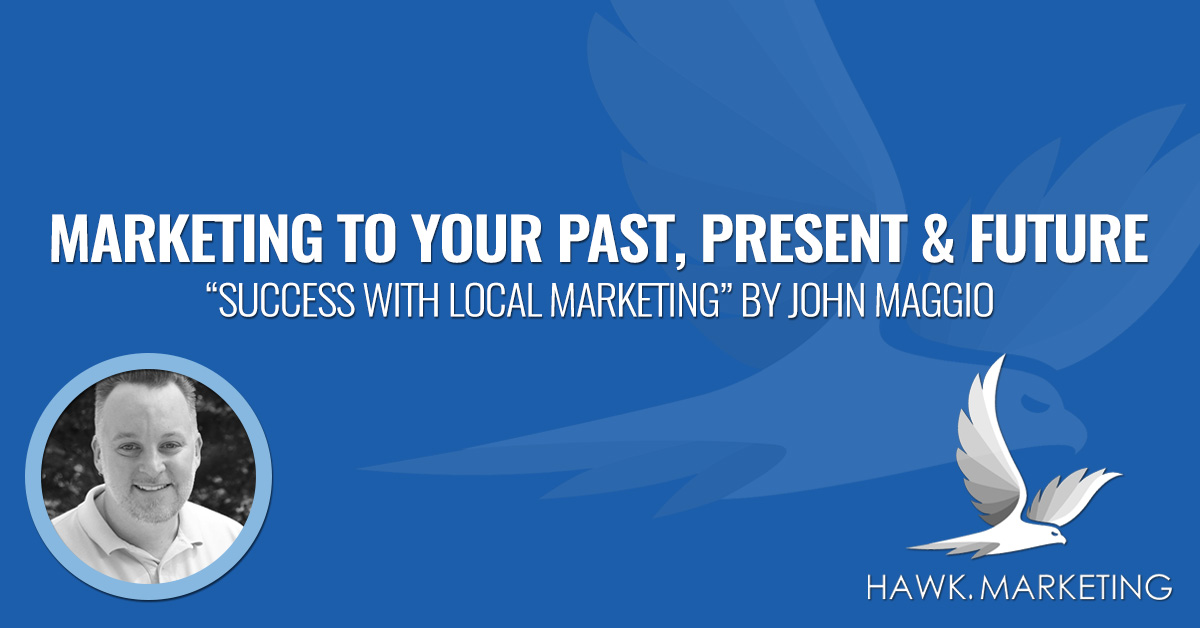
When experiencing a downturn in business, the tendency is to cut or reduce your marketing budget. Most business experts would agree that quitting your marketing will lead to greater losses down the road. When cash flow is tight, or the economy is changing, you need to change your marketing tactics. If the economy is doing great, you can invest more marketing dollars toward success in the future. Building reviews, adding more emails to your list, or expanding your website’s content will help you be found on Google now and in the future.
But, when things get tight, and your cash flow is an issue, you may need to switch gears and market towards getting clients right now. Backing off blogging and spending more money on advertising, such as Facebook or Google Ads, might make sense.
To adjust your strategy properly, you need to discuss with your marketing professional ways to improve performance depending on goals. We need to discuss which marketing activities target which types of clients. Future, past or present. Are you targeting clients for the future, are you marketing toward your past clients, or are you trying to get the phone to ring right now?
Marketing to Future Clients
Expensive upfront but the payoff in the future has high value
What assets do you get to keep and reuse when spending money on marketing? Most of the marketing options out there are like paying rent. When you stop paying, the phone stops ringing. Marketing toward the future builds up over time and ads to your company’s equity. The cost for client acquisition is a little expensive upfront but pays off over time.
Blogging or Content Marketing
Creating custom content can be one of your marketing budget’s more expensive line items. Often handmade and even with the help of AI, creating custom content is labor intensive and requires trade skills. That hard work pays off. The content you pay for one time can bring traffic to your website for years.
Content marketing and blogging are highly effective ways to generate new traffic to your website. Each page will bring visitors month over month. Building a library of online content is how to drive long-lasting residual website traffic.
Like many investments, building up your content portfolio can be costly upfront but will pay huge dividends later. Lastly, content is an asset and part of your company’s equity.
Building Your Email List
Your email list, or “little black book” as they used to call them, is one of the most important assets a company can have. And, one of the most valuable when it’s time to sell or exit your company. A company with hundreds of reviews, thousands of emails, and tons of blogs bringing in new customers will have a much higher value than a company without these assets. Email marketing is also an essential part of marketing to your past customers, which we will cover in more detail below.
Google Maps
Year after year, the Google Map Pack becomes more critical for being found online.
Half of the searches don’t lead to a website view. Google is offering the searcher your phone number, photographs, and reviews of your company. So, why do they need to physically visit your website? In fact, Google knows most sites are not that great. For Google to provide the best experience for their customers, they provide your essential information, quickly. Many are no longer visit each website to learn more. They simply go down the list of phone numbers and call companies with good reviews.
How do you ensure you are on the top of the Google Map Pack Pile? They want to make sure that searches are bringing up companies that are active online. They give companies three main ways to show activity: reviews, photo uploads, and posting updates.
We could write a whole chapter on Google reviews, but for this discussion, Google would like to see at least 50 reviews from your company. And not all at once. Consistency is key. A few reviews a week/month is a great goal. Reviews take a long time to build, so staying consistent when asking for them is essential.
Many don’t know, but Google really loves when you upload photos of your business and projects. They even have pre-set categories for your logo, staff, interior, exterior, and projects. A good benchmark to think about is a minimum of 150 photo uploads. Remember, not all at once. Uploading 144 at once is less effective than uploading a dozen monthly. Remember, as we said earlier, consistency is key.
Much like other social media platforms, Google Maps allows you to create posts. Typically we repurpose blog posts and other social media posts for these Google Map Posts. Again, be consistent.
Marketing to Customers from the Past
Word of Mouth is #1… That’s why we remarket to our past customers
As many have said in the past, “We get most of our clients from word of mouth.” We understand that, and it’s yet another reason email marketing is still #1—the cost of client acquisition when marketing to customers from the past is low. Sales come from repeat buyers or warm referrals.
Email Marketing
Why is email still #1? Not only because people buy and sign up directly from their inbox, but you can’t beat the branding. Even if the recipient doesn’t open the email, they still see your name or company. Once again, this keeps you top of mind.
Sending out one or two monthly emails to your past customers is a great way to strengthen word-of-mouth referrals, stay top of mind, and ask for reviews. Some businesses send out promotions, but we see equal, if not better, results in sending educational content. Establish yourself as the subject matter expert on the topic.
At New Balance, we sent emails announcing new products and advertising heavy discounts on other products. We received just as strong a response when highlighting new products as we did through heavy discounts.
Postcards
Print is not dead because print can be very effective when used with intent. Sending follow-up thank you cards significantly improves metrics such as sales, reviews, and word-of-mouth referrals. Thank you cards are so effective that the print industry has invested millions of dollars in building machines that handwrite thank you cards. Imagine a huge machine holding a little bic pen! Armies of them row after row…
Don’t forget to ask for a review, ask for a referral and give an incentive for them to call you again.
Subscriptions
Low cost of entry or free subscriptions can go a long way. Subscriptions can be monthly, quarterly, bi-annual, or annual. Abend Plumbings’ $11/mo 11-point home subscription is a great example. For $132, they come to your house twice a year, perform an 11-point plumbing inspection and flush your water heater. Very cost-effective for the homeowner, but also an excellent way for Abend to have two yearly upsell opportunities. Even the pipes are happy! A win/win for all.
Another great subscription is the often-overlooked print newsletter. Not everyone is constantly online, nor does everyone like to read everything on their little cell phone screens. Print newsletters allow the reader to read your content at their leisure comfortably. Not everything is always on the go, go, go.
Another great example is when a nonprofit organization signs donors for small monthly donations. $5-$10 low entry points convert higher versus asking for larger sums at once.
Marketing to the Present
Just like rent, it’s cheaper to get started, but when you stop paying, the phone stops ringing
When you need the phone to ring in the short term, even right away, marketing to the present is the way. But just like paying rent, when you stop paying, the phone stops ringing. Often the cost per client acquisition is on the higher side.
Google Ads
Google ads have been around for just about as long as Google itself. For a long time, Google Adwords was the only viable option for paid online traffic.
Today Google offers three main options for online advertising.
- Traditional PPC – Can be Complex, often needing an expert
- Smart PPC Ads – Overly Simplified with limited options
- Google Guarantee – Pay per Call, but only specific Blue Collar Industries in particular metropolis’ can qualify
Facebook Ads
Simply put, Facebook is drastically undercutting Google. The price per click is over 50-90% cheaper than a click from a Google Ad. Yes, the buyer intent is different on social media, but when you drive ten times the traffic to your landing page, there will be results.
Facebook offers a variety of ways to advertise. They make it easy. Simply click the Boost Button. You can drive traffic to your website, generate leads with short forms, encourage chats, and even generate phone calls.
Going Postal
Print marketing is not dead, nor is it cheap! That is why you must track your results every time. Use redemption codes, QR Codes, landing pages, and tracking phone numbers. Make sure the marketing is working for you. Otherwise, you’re just wasting paper.
Here are the three main ways to get in front of your prospects.
EDDM
EDDM – Every Door Direct Mail is a service from USPS. You simply go to the USPS website and select the routes you wish. Most local print shops will be proficient in helping you get items printed and to the post office. Currently, the flat rate postage for EDDM is $0.18 ea. The number of addresses can add up quickly, and the mailings can get expensive. Everyone always asks, “How many times should we send it for the best result?” It’s not an exact science, but the answer is rarely “once.” That’s why it’s so important to track results.
Thank You Cards
Sending out follow-up and thank-you cards works. Think back to that army of giant machines with tiny bics. Everyone likes to feel special, even for just a moment. Most CRM software will allow you to send out a thank you card automatically. Automate processes where you can.
Their Neighbors
Birds of a feather flock together. If you can identify a trend in the neighborhood, you can send postcards to those who live near a successful past customer. That plumbing company might realize the whole neighborhood has terrible pipes, or that electrical company notices all of the houses in that neighborhood have lousy wiring. Could your non-profit organization gain more members if they knew their neighbors were involved? The examples are endless.
Which Types of Marketing Do You Need?
Past, present, and future marketing generates different types of leads at varying costs. Now that you have a better feel for what each does, you can adjust your marketing budget accordingly. Are things going good? Can we invest in the future? Is cash flow tight? Do we need the phone to ring right now?
How balanced is your marketing budget? Are you spending too heavily in one area and ignoring the others? If you turned off the ads, do you have enough content and reviews to keep the leads coming in?
If the economy turns south, can you reallocate your marketing budget? The most important thing to remember is that stopping your marketing only creates more losses further down the road. Test, tune, and constantly adjust.

